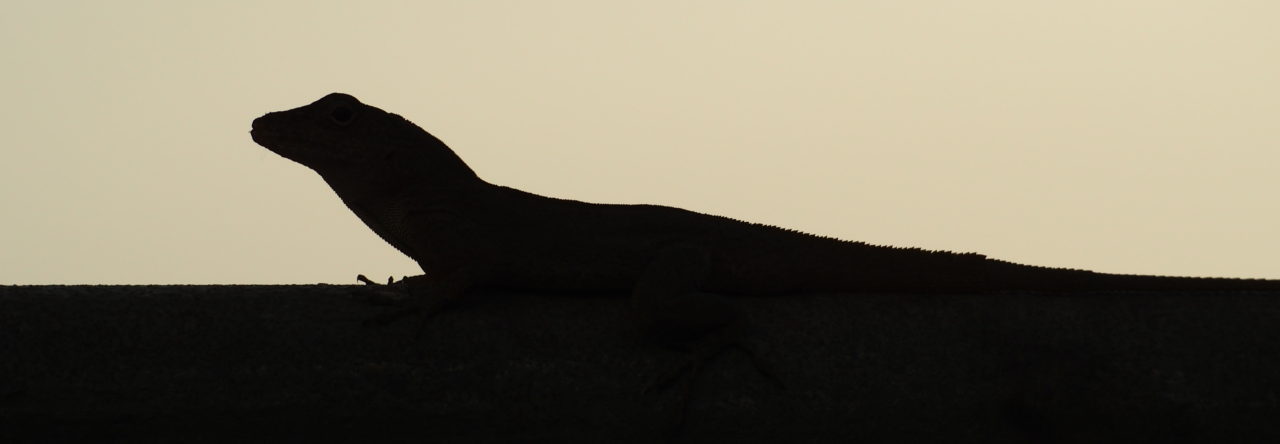We’ve heard about the effects of polar vortexes here on Anole Annals before. The infamous 2013/2014 event brought record-breaking snow and low temperatures to the Southern U.S., leaving people and animals both a little chilled. This created the perfect opportunity for Shane Campbell-Staton to investigate the effects of such extreme events on thermal tolerance of the native Carolina Anole, Anolis carolinensis. Shane also spoke about this at SICB earlier this year, and AA contributor Martha Muñoz covered the talk pretty thoroughly here on Anole Annals. Nevertheless, I’ll summarize some key points here in case you missed it.

An unlucky lizard during the polar vortex snow storms in the South.
Shane got lucky in the sense that he had measured thermal tolerance in August 2013 for populations affected by the polar vortex, 5 months before the event. Typically, the cold arctic air is tightly constrained around the North pole, but periodically the boundaries weaken and the cool air expands southward. These events are not regular, so Shane had no idea one was coming that winter or that it would extend so far south. It was serendipitous that his study populations, 3 in Texas and 1 in Oklahoma, were impacted by the extreme weather event. This species, particularly in the Southern portion of its range, is not used to low temperatures and reports came in of anoles dying off during the storm.

Air temperatures for January 5-7, 2014, compared to the 1981-2010 average. Map by NOAA Climate.gov
So Shane returned in August of 2014 and sampled again, curious as to how this cold impacted thermal tolerance. He found that tolerance to low temperatures, measured as critical thermal minimum (CTmin), was lower in some populations after the event! Even more, the difference was greatest in the Southernmost population (Brownsville, Texas). Shane returned again in the fall of 2014 to see if this effect persisted or if it was simply a plastic response to the event. He found that the populations sampled in 2014, and presumably their offspring, still had lower critical thermal minimums. This result suggests that the extreme cold weather had caused an evolutionary shift in cold tolerance via natural selection: only the animals that could tolerate the cold temperatures survived and passed on their cold-tolerance genes. Shane went on to conduct a common garden study to verify that the trait was not simply a plastic response. He found that the lower CTmin persisted in lab-reared animals: strong evidence that these shifts had a genetic basis.
Lastly, Shane looked at the functional genomics of cold tolerance. Using liver tissues to obtain transcriptomes (representing expressed genes), he found several gene modules associated with thermal tolerance including some associated with respiratory electron transport chain, lipid metabolism, carbohydrate metabolism, and angiogenesis/blood coagulation. He also found that the gene expression patterns in the Southern populations affected by the storm resembled the Northern populations that more regularly experience cool temperatures, indicating a common genetically based adaptive response across populations.












